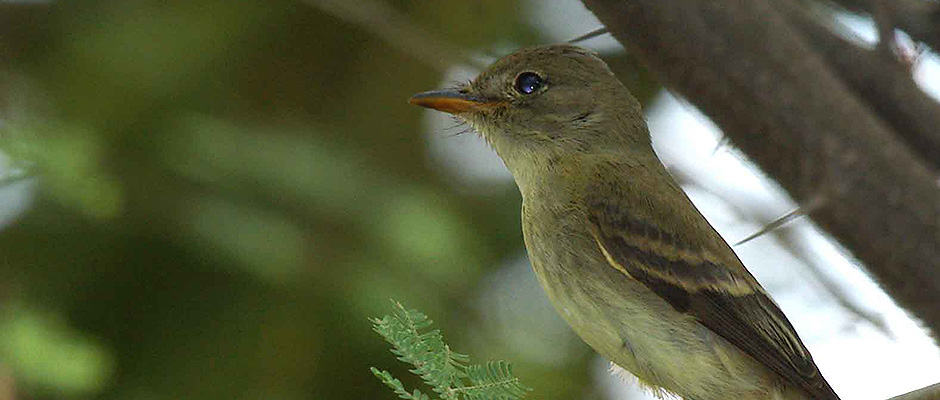Share this article
Win-Win for Southwestern Willow Flycatchers
What do western landowners and a small, grey endangered bird species have in common? They’ll both be coming out on top because of a new conservation program unveiled last week that aims to restore their habitat on the West Coast.
Working Lands for Wildlife (WLFL), a partnership between the U.S. Department of Agriculture’s Natural Resources Conservation Service and the U.S. Fish and Wildlife Service that started in 2012, is behind the new plan to conserve habitat for 84 riparian species including the federally endangered Southwestern willow flycatcher’s (Empidonax traillii extimus), while simultaneously supporting working lands in Arizona, California, Colorado, Nevada, New Mexico and Utah.
“The purpose of Working Lands for Wildlife is threefold,” said WLFL coordinator Galon Hall. “One, we hope to create a win-win for agriculture and wildlife; two, we want to effectively target or prioritize conservation; and three, we want to provide regulatory assurances for potential listings or regulatory protection for private landowners’ conservation activities.”
Deemed an “ecosystem-wide model,” the new conservation plan is a targeted approach that Hall hopes will provide an example for all future conservation efforts. Through the model, WLFW plans to work closely with Southwest landowners who volunteer to be part of the program to increase riparian zones and deserts that would benefit protected species. For example, private landowners that have Southwestern willow flycatchers on their land can continue their grazing operations strategically in a way that the bird can continue to use that land at certain times of the year. Further, as part of the plan, landowners have incidental take coverage for threatened or endangered species without having to sign any type of formal contract. Instead, they would have to implement conservation activities such as managing brush or invasive species that align with measures to protect the species.
In 2012, WLFW selected the Southwestern willow flycatcher as one of seven priority species and since then the NRCS has worked with landowners in six western states to restore riparian land that the bird relies on for nesting habitat. The expansion of this program will engage more landowners and provide incentives for six conservation practices including installation of a stream crossing, pumping plant, micro-irrigation system or livestock shelter; mulching; and planting for species habitat.
“This is a model for how we should do business with targeted species conservation in the future,” he said. “Instead of one species, we can facilitate regulatory predictability for many different species that occupy the identified habitat. This example of targeting conservation where it’s the most effective is one of the ways that we want to see Farm Bill dollars spent on wildlife conservation moving forward.”
Header Image:
A Southwestern willow flycatcher perches on a branch. This federally endangered species is one 84 species Working Lands for Wildlife will be aiding by restoring their habitat and simultaneously benefiting private landowners.
Image Credit: U.S. Fish and Wildlife Service








